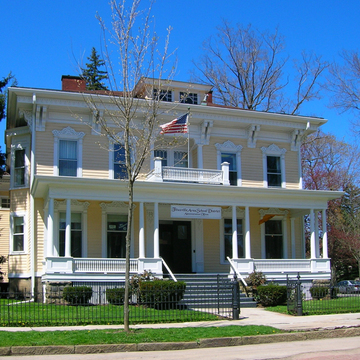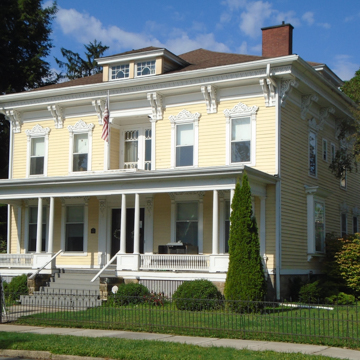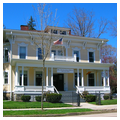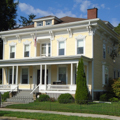You are here
Titusville Area School District Administrative Building (Maltby-Scheide House)
This pleasant, frame foursquare house has paired brackets and elaborate moldings over the windows that were added by the second owner. But what sets the house apart is the large brick addition at the northwest corner. Soon after his father, William T. Scheide, died and left him his rare book collection, John Hinsdale Scheide purchased this house and commissioned his Princeton classmate and friend William Woodburn Potter (1875–1964) to design a brick, Tudor Revival library building for the collection. This was no ordinary library, for it contained some of the world's rarest books: a Gutenberg Bible, a complete critical edition of the works of Johann Sebastian Bach in forty-seven volumes, and the First Folio of Shakespeare. Upon Mrs. Scheide's death in 1959, the library was donated to Princeton University. To honor the collection, a room emulating Potter's design and using its stained glass windows was added to Princeton's existing Firestone Library. The house and its library room were donated to the Titusville Area School District.
Writing Credits
If SAH Archipedia has been useful to you, please consider supporting it.
SAH Archipedia tells the story of the United States through its buildings, landscapes, and cities. This freely available resource empowers the public with authoritative knowledge that deepens their understanding and appreciation of the built environment. But the Society of Architectural Historians, which created SAH Archipedia with University of Virginia Press, needs your support to maintain the high-caliber research, writing, photography, cartography, editing, design, and programming that make SAH Archipedia a trusted online resource available to all who value the history of place, heritage tourism, and learning.





